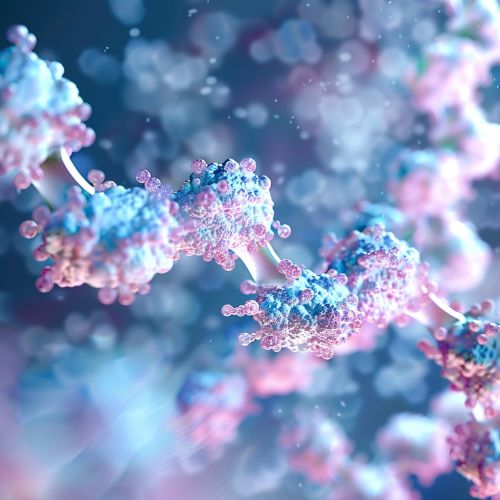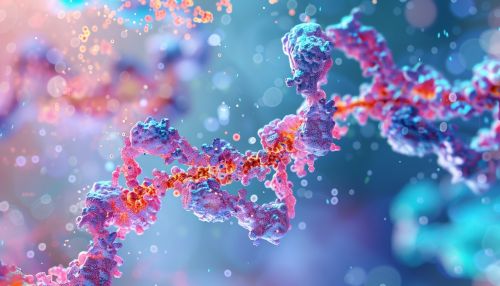Enzymes in Protein Metabolism
Introduction
Enzymes are biological catalysts that speed up chemical reactions in living organisms. In the context of protein metabolism, enzymes play a crucial role in both the synthesis (anabolism) and degradation (catabolism) of proteins. This article delves into the intricate roles of enzymes in protein metabolism, shedding light on the specific enzymes involved, their mechanisms of action, and the regulatory processes that control their activity.


Protein Anabolism
Protein anabolism, also known as protein synthesis, is the process by which cells build proteins from amino acids. This process is facilitated by a series of enzymes, each with a specific role.
Aminoacyl-tRNA Synthetases
The first step in protein synthesis involves the attachment of an amino acid to its corresponding transfer RNA (tRNA) molecule, a process catalyzed by enzymes known as aminoacyl-tRNA synthetases. These enzymes ensure the correct pairing of amino acids and tRNA molecules, a crucial aspect of maintaining the fidelity of protein synthesis.
Ribosomal Enzymes
The actual process of protein synthesis takes place on the ribosome, a complex molecular machine composed of proteins and ribosomal RNA (rRNA). Several enzymatic activities are associated with the ribosome, including peptidyl transferase, which forms peptide bonds between amino acids, and ribonuclease, which cleaves the tRNA molecule from the growing peptide chain.
Protein Folding Enzymes
Once a protein has been synthesized, it must fold into its correct three-dimensional structure to function properly. Several enzymes, including protein disulfide isomerase and peptidyl-prolyl isomerases, assist in this process by catalyzing the formation and rearrangement of disulfide bonds and proline residues, respectively.
Protein Catabolism
Protein catabolism, or protein degradation, is the process by which cells break down proteins into their constituent amino acids. This process is also mediated by a series of enzymes.
Proteases
Proteases, also known as proteolytic enzymes, are responsible for the initial breakdown of proteins. These enzymes cleave the peptide bonds between amino acids, releasing individual amino acids or small peptides.
Aminotransferases and Deaminases
Once proteins have been broken down into amino acids, these molecules can be further metabolized to produce energy or serve as precursors for other biochemical pathways. Aminotransferases and deaminases are two classes of enzymes that facilitate these processes by transferring amino groups and removing amino groups, respectively.
Urea Cycle Enzymes
The breakdown of amino acids produces ammonia, a toxic compound that must be removed from the body. The urea cycle is a series of enzymatic reactions that convert ammonia into urea, a less toxic compound that can be excreted in the urine. Key enzymes in this cycle include carbamoyl phosphate synthetase I, ornithine transcarbamylase, and arginase.
Regulation of Enzymes in Protein Metabolism
The activity of enzymes involved in protein metabolism is tightly regulated to ensure that the rates of protein synthesis and degradation are balanced. This regulation can occur at several levels, including gene expression, post-translational modification, and allosteric regulation.
Regulation at the Level of Gene Expression
The synthesis of enzymes is controlled at the level of gene expression. In response to various signals, cells can increase or decrease the production of specific enzymes to adjust the rates of protein synthesis and degradation.
Post-Translational Modification
Many enzymes are regulated by post-translational modifications, such as phosphorylation, acetylation, and ubiquitination. These modifications can alter the activity, stability, or localization of enzymes, providing a rapid and reversible means of regulation.
Allosteric Regulation
Some enzymes are regulated by allosteric modulators, small molecules that bind to sites on the enzyme distinct from the active site. Allosteric modulators can either enhance or inhibit enzyme activity, providing another layer of control over protein metabolism.
Conclusion
Enzymes play a pivotal role in protein metabolism, facilitating the synthesis and degradation of proteins. Through their diverse enzymatic activities, these biological catalysts ensure that cells can build, remodel, and recycle proteins in a controlled and efficient manner. Understanding the roles and regulation of these enzymes not only provides insight into the fundamental processes of life but also has implications for the treatment of diseases associated with protein metabolism disorders.
